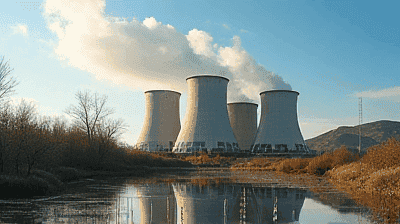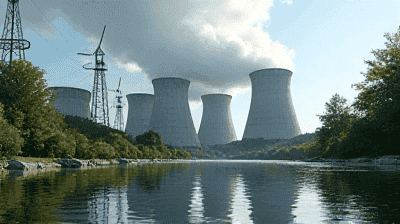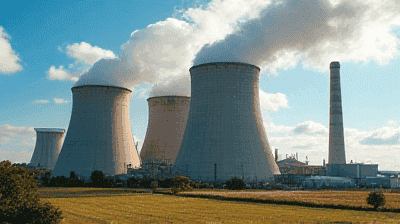
As the global population continues to expand and urbanize, waste management has become one of the pressing challenges of our time. Traditional waste disposal methods, particularly landfills, not only occupy vast land areas but also contribute significantly to greenhouse gas emissions and soil contamination. In response to these issues, waste-to-energy (WTE) plants have emerged as a potential solution, converting municipal solid waste into usable energy. However, the question remains: are WTE plants a sustainable alternative to conventional waste management, or do they pose significant pollution risks?
Waste-to-energy (WTE) refers to a process that converts non-recyclable waste materials into usable forms of energy, typically electricity, heat, or fuel. This is accomplished through several technological methods, including incineration, anaerobic digestion, and gasification.
Collection and Sorting: Waste is collected and transported to a WTE facility. Here, it undergoes sorting to separate recyclable materials from non-recyclables. This step is crucial as it reduces the potential for pollutants in the remaining waste stream.
Processing Methods:
Energy Generation: The energy produced through these processes can be harnessed to generate electricity, heat, or biofuels, providing a renewable energy source.
Residual Ash and Byproducts: After incineration, the remaining ash may contain toxic substances and must be managed carefully. Anaerobic digestion produces digestate, which can be used as fertilizer if free of pathogens and contaminants.

WTE plants significantly reduce the volume of waste that ends up in landfills, addressing one of the major challenges of waste management. Incineration can reduce waste volume by up to 90%, which alleviates the pressure on limited land resources.
WTE facilities provide a renewable energy source, converting waste into electricity and heat. This can help diversify energy sources and reduce reliance on fossil fuels, contributing to energy security.
By diverting organic waste from landfills, WTE plants can help mitigate methane emissions, a potent greenhouse gas released during the decomposition of organic matter in anaerobic landfill conditions. By harnessing energy from waste, WTE facilities can play a role in reducing overall greenhouse gas emissions.
The development and operation of WTE plants can create jobs in construction, maintenance, and energy production. Additionally, the combined benefits of waste management and energy generation can contribute to local economies and promote sustainable development.
WTE plants can form part of a comprehensive waste management strategy that includes recycling and composting. They serve as a practical solution for dealing with waste that cannot be effectively recycled or composted.
One of the most significant concerns surrounding WTE plants is the potential for air pollution. The incineration process releases emissions that can include toxic substances such as dioxins, particulate matter, and heavy metals. Proper controls are necessary to ensure emissions remain within regulatory limits.
The ash produced from incineration may contain hazardous materials that require careful management. Depending on the composition of the waste, a substantial portion of the incinerated material may need to be disposed of in specialized landfills, which can defeat some of the benefits of waste reduction.
Critics argue that WTE plants can lead to a false sense of security regarding waste management. The ability to convert waste into energy may discourage recycling efforts, as some may perceive it as a more straightforward solution to waste disposal rather than focusing on waste reduction and recycling.
The initial investment for constructing WTE plants can be substantial, often requiring public funding and significant financial backing. Additionally, the operational costs can be high, leading to questions about long-term economic viability.
Many WTE projects face opposition from local communities concerned about potential health risks and environmental impacts. Public perception plays a vital role in the acceptance of such facilities, and addressing community concerns is crucial for successful implementation.

Sweden is often cited as a model for effective waste management, with a significant proportion of municipal solid waste being converted into energy. Approximately 50% of Sweden's household waste is incinerated for energy, contributing to the country's commitment to sustainability.
Advantages: Sweden has developed robust waste sorting programs and has invested in advanced emission control technologies, which have allowed them to minimize pollution from WTE plants.
Challenges: As Sweden's reliance on WTE increases, further examination is needed to balance the roles of recycling and waste-to-energy, ensuring that the focus remains on reducing waste generation.
Germany operates numerous WTE facilities and is recognized for its waste management policies. The country integrates WTE into a broader strategy that combines recycling, composting, and waste minimization.
Advantages: Germany’s effective waste management framework has allowed it to achieve a high recycling rate while also utilizing WTE plants for non-recyclable waste.
Challenges: Concerns about emissions and ash disposal continue to prompt ongoing debate within communities regarding the long-term sustainability of WTE solutions.
The U.S. has a mix of WTE facilities, but they face varying perceptions and regulatory environments across states. Some plants, primarily located in urban areas, have been operational for decades.
Advantages: WTE can provide a significant energy source while diverting waste from landfills, particularly in regions with limited space for landfill expansion.
Challenges: The U.S. has seen a rise in opposition due to environmental concerns, leading to policy scrutiny and a reevaluation of the role of WTE in waste management strategies.
To ensure that WTE plants operate sustainably, it is essential to have a robust regulatory framework that governs emissions, waste handling, and operational procedures. Governments must implement strict emissions standards and monitoring systems to safeguard public health and the environment.
WTE should be part of an integrated waste management strategy that prioritizes waste reduction, recycling, and composting. Policymakers must promote comprehensive systems that encourage communities to generate less waste overall.
Public engagement is key to the successful implementation of WTE facilities. Providing transparent information on emissions, health impacts, and waste management practices can help build trust between communities and waste management authorities.
Investing in research and development can lead to technological advancements in WTE processes, improving efficiency, and reducing environmental impacts. Innovations in emissions control technologies and waste sorting can enhance the viability of WTE plants.

Waste-to-energy plants represent a complex intersection of waste management, energy production, and environmental sustainability. While they offer potential benefits—including waste reduction, energy generation, and decreased greenhouse gas emissions—they also pose challenges related to pollution and community acceptance.
Ultimately, the sustainability of WTE plants hinges on effective management and regulatory oversight. Successful implementation requires a commitment to reducing waste generation, promoting recycling and composting, and addressing public concerns about health and environmental risks.
In the context of an evolving waste management landscape, WTE facilities can play a role in advancing sustainable practices but should be viewed as part of a broader strategy that prioritizes minimizing waste and maximizing resource recovery. As societies continue to grapple with the challenges of waste management, a balanced approach that incorporates WTE—alongside vigorous recycling efforts and waste reduction strategies—can contribute to a more sustainable future.